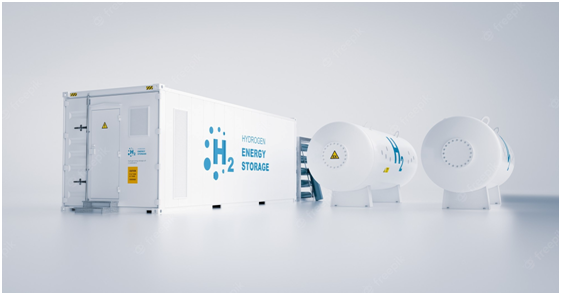Heavy industry is a primary contributor to carbon dioxide and other greenhouse gas emissions, but also a crucial partner in the effort to reduce those emissions. Since heavy industry makes things like cars, cement, steel, plastics, and chemicals—things that society can’t live without—it won’t go away any time soon. Therefore, the best way to reduce its carbon footprint is by reducing its energy consumption. And that’s exactly what we are seeing in practice. Several major heavy industry players have made enormous strides in cutting energy usage and switching over to cleaner sources of power. Let’s take a look at how they did it with hydrogen and electricity: Continue reading > To many people, the words “industrial” and “heavy” imply dirty or outdated technology. However, this couldn’t be further from the truth for modern manufacturing facilities which are equipped with advanced analytics software as well as data-driven solutions such as artificial intelligence (AI) and the Industrial Internet of Things (IIoT). In fact, these companies are quickly becoming leaders in sustainability and new technologies that are helping them cut costs while reducing their carbon footprints.
Hydrogen And Electricity: The Key to a More Sustainable Future?
All power plants emit carbon dioxide (CO2) when they burn fuel to generate electricity. Unfortunately, this is true even for facilities that use renewable energy, such as solar and wind power. However, the CO2 emitted by these plants is eventually reabsorbed into the natural carbon cycle. Hydrogen, on the other hand, is clean and represents a real alternative to the current grid. It can be used to store and distribute renewable energy and provide efficient, clean power.
Why the heavy industry needs hydrogen
While hydrogen is a clean source of energy, it must be produced from another source, like natural gas. Unfortunately, natural gas is a fossil fuel that releases harmful greenhouse gas emissions when it is burned. But when hydrogen is produced from natural gas, the process captures and stores the CO2 that would otherwise be emitted by the power plant. Because hydrogen is a clean source of fuel, the heavy industry can use it to power heavy-duty machinery like cranes and forklifts, as well as smaller machines, like automated guided vehicles (AGV). Currently, many industries are already using hydrogen. Some examples include the automotive, steel, and chemical industries.
Using hydrogen in heavy industry
Heavy industry will always need a reliable source of energy to produce and manufacture the things that society relies on on, like steel, cement, and chemicals. Hydrogen provides a reliable source of clean energy for these facilities in two ways: – Power generation using hydrogen: Hydrogen can be used to generate electricity at power plants, either as a fuel or a feedstock. The most common method is using hydrogen to burn natural gas. By adding hydrogen to the fuel, the CO2 emissions from the power plant are greatly reduced. Hydrogen can also be used to generate electricity from solar and wind energy. In this case, the solar panels or wind turbines generate electricity that is then sent to the power grid, while hydrogen is used to store the electricity when the demand is high and provide safe, clean electricity when the sun isn’t shining or the wind isn’t blowing. – Power transmission using hydrogen: Transmission grids are responsible for moving large quantities of electricity from power plants to customers. Hydrogen can be used in these grids to move excess renewable energy from solar and wind farms to demand centers. This way, renewable energy can be used even when the sun isn’t shining or the wind isn’t blowing. Hydrogen can also be used to transport electricity from remote locations to demand centers.
Electro-chemistry: A path towards sustainable power generation by using hydrogen
Hydrogen is a clean source of energy, but it can only be generated from other sources, like natural gas, which produces CO2. But when hydrogen is produced from natural gas, the process captures and stores the CO2 that would otherwise be emitted by the power plant. This means that hydrogen can be used to provide reliable energy for heavy industry while actually reducing CO2 emissions. Furthermore, growing industries can benefit from using hydrogen as a feedstock for chemicals and other products. Hydrogen can be used to produce ethylene, propylene, ammonia, and methane, all of which are important feedstocks for chemicals and fertilizers.
Conclusion
Given the scale of the problem, no single technology will solve the problem of reducing greenhouse gases in the world’s heavy industry. Luckily, there are many promising solutions on the horizon, including electrolysis using renewable energy to make hydrogen, electrochemical reactions to synthesize useful products from CO2, and efficient transmission of electricity from wind turbines to consumers. Hydrogen is a clean source of energy that can be used to improve the heavy industry. It can be used to replace fossil fuels and generate electricity at power plants, as well as store renewable energy and move it through transmission grids.
